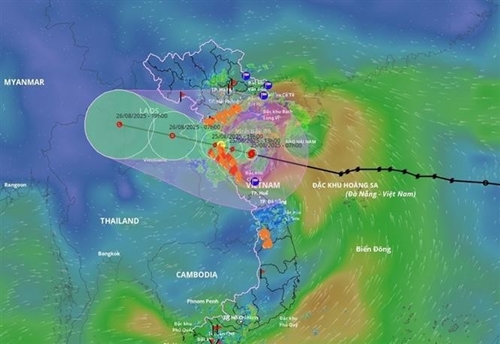August 25, 2025 | 18:55 (GMT+7)
Deputy PM directs urgent response measures to Typhoon Kajiki
Deputy Prime Minister Tran Hong Ha urged local authorities and relevant agencies to remain vigilant, and instructed police forces to ensure residents stay indoors from 11:00 to 18:00 on August 25 while chairing an emergency meeting on the same day to direct response measures to Typhoon Kajiki, the fifth storm to hit the East Sea (aka South China Sea) this year.
After listening to reports from localities and functional forces on the typhoon’s developments and response efforts, Ha emphasized that it is a powerful storm with complex developments. Forecasts of its path have been relatively accurate, he said, urging agencies and localities to remain on full alert.
    |
 |
|
Typhoon Kajiki’s movement on August 25 |
He also called on media outlets to provide timely and comprehensive information so that people can effectively prepare for and respond to the typhoon.
The Deputy PM warned that heavy rainfall during and after the storm could trigger flooding, flash floods, and landslides in low-lying and vulnerable areas. While current efforts must prioritize storm response, he said, clear plans should also be made to identify high-risk zones and mobilize forces and equipment to handle landslides, ensure traffic flow, and respond to emergencies. He stressed the importance of applying the “four on-the-spot” principle – local command, manpower, materials, and logistics – with a focus on villages and hamlets for effective disaster prevention.
Highlighting the critical role of communications in command and coordination, Ha instructed Viettel and VNPT to immediately check equipment for local leaders and disaster response officials. He assigned the Ministry of Agriculture and Environment and the Ministry of Industry and Trade to take overall responsibility for regulating reservoirs and dams. Local authorities were asked to conduct early inspections, make prompt proposals, and strictly prevent incidents caused by negligence.
Following the meeting, the Deputy PM, together with officials from ministries, sectors, and agencies, inspected vulnerable areas and reservoirs in Ha Tinh areas.
Source: VNA